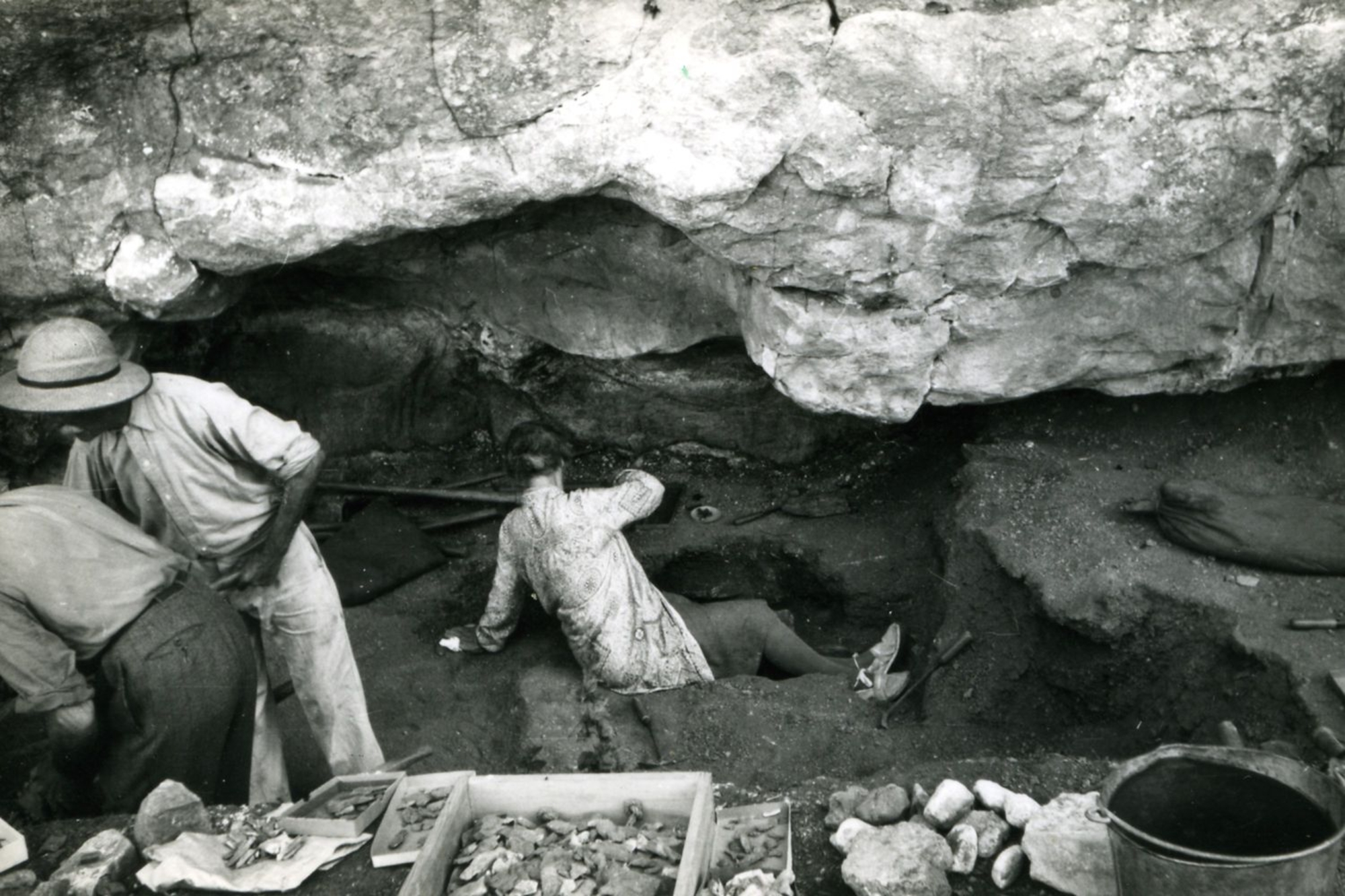
- Home
- The Roc-aux-Sorciers Shelter
- The Context
The shelter sits at the foot of forty-metre-high limestone cliffs and faces south. It is nearly fifty metres long and can be divided into three sections.
The southeast end of the shelter, known as the Taillebourg Cave, features a large, cave-like overhang whose decorated ceiling collapsed during the Magdalenian Period. Next to it, an intermediate zone has been kept as an archaeological reserve. Finally, there is a shallow sculpted rock shelter, known as the Bourdois Shelter, some twenty metres in length.
Chronostratigraphy
The occupation of the site can be traced in the two excavated sections. The most elaborate stratigraphy is the one uncovered by Suzanne de Saint-Mathurin below the sculpted frieze that is still in situ. It provides a long sequence, including an initial grouping dating to the Upper Magdalenian (ca. 12–10,000 BP), with occupation traces that appear to indicate brief visits by hunter-gatherers. The second, which was sealed by the overhang's collapse, has been attributed to the Middle Magdalenian (some 15,000 BP), and is also found in the Taillebourg Cave. The occupation traces are denser for the Middle Magdalenian, when the site was sculpted.
Archaeological context
Several archaeological occupations have been described but unfortunately, since they were excavated many years ago, their length and frequency cannot be precisely stated. The thinness and the discontinuity of the Upper Magdalenian layers and the nature of the archaeological material associated with them suggest infrequent visits by hunters. Nevertheless, the thickness of the layers attributed to the Middle Magdalenian, combined with the study of the fauna, indicate long-term occupations. The close connection between traces of domestic occupations and the symbolic elements (decorative elements, art material and wall art) give a specific function to this shelter, different from that of "sanctuary", a term with which deep decorated caves are often tagged.
Associated media
Open Media Library

The Taillebourg Cave at Roc-aux-Sorciers

View of the Bourdois Shelter

First stratigraphic drawing of excavations at Roc-aux-Sorciers, 1929

Stratigraphic view of Roc-aux-Sorciers

Excavation of the Bourdois Shelter at Roc-aux-Sorciers

Suzanne de Saint-Mathurin working in the Taillebourg Cave at Roc-aux-Sorciers

Photograph of the 1950s excavation campaign

View of the Bourdois Shelter

